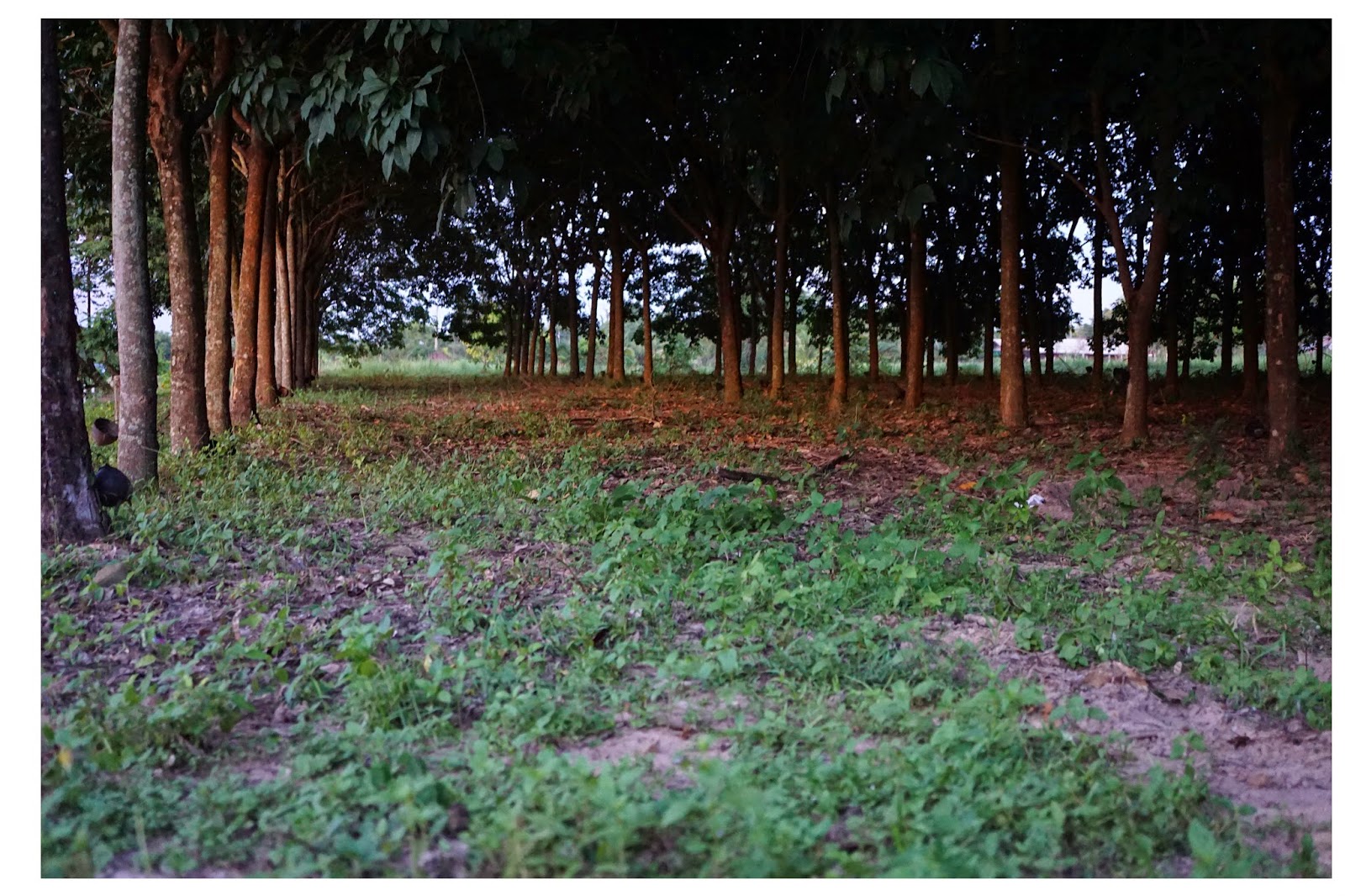After the 10th International Mycological Congress, I wandered around in Bangkok for a little under a week, figuring out what to do next.
Through some professors at a local university, I joined a group of Thai Department of Agriculture researchers promoting the use of two biofertilizers to farmers in Khukhan province during an annual provincial agricultural exhibition (think Thai equivalent of a state fair).
The biofertilizers: Rhizobium, which is a genus of soil bacteria that associate with the roots of legumes and fix nitrogen, inoculant for legume cultivation, and Azolla (a genus of small aquatic ferns that float on the surface of the water in rice paddies) that associate closely with Anabaena, a cyanobacteria capable of fixing nitrogen into a form that rice can access. The goal of these biofertilizers is to reduce the use of synthetic nitrogen fertilizer in agriculture.
The fair had some interesting mushroom-related booths -- I had to guess based on the pictures because I was the only person there who wasn't Thai and few people spoke English. Fortunately I was already somewhat familiar with the common socio-agri-mycological topics of the area. One booth dedicated to conservation of wildlife had a large poster with pictures of various native and rare fungi, one was dedicated to mushroom cultivation (mostly Pleurotus and Ganoderma), and one was dedicated either to the collection of wild Amanita aff. caesarea in dipterocarp forests or the attempts to create dipterocarp+Amanita plantations to reduce poaching/increase production. I wasn't clear on that one because it was adjacent to some cultivation booths, but I know the species associates so closely with trees that it can't be cultivated on its own.
A notable takeaway from the fair, besides the cultural immersion, was simply that mushrooms, cultivated and wild, are included as a valid, recognized, and valued food resource in the local system. If I encountered evidence of that at a state fair in Arkansas, I would be shocked.
 |
| Rubber trees at a farm in Khukhan province, Thailand (near Cambodia) |
 |
| Irrigation canal |
 |
| A marching band before the opening ceremony of the agricultural exposition/fair. A rather surreal sight coming from New Orleans. |
 |
| Thai traditional dancers and local government officials at the opening ceremony. |
 |
| Close-up of a silk moth at a booth on sericulture. |
 |
| Silk from start to finish. |
 |
| On the trip back we went to two ancient structures -- one right on the border has a peculiar history because it was declared to be Cambodian though it was on Thai land, so we could only see it from a distance. Perhaps I'll visit it from the Cambodian direction later. This temple/palace was on the way back to Bangkok, but I can't recall the name. |
 |
| Very beautiful, but my camera battery died so I couldn't get many photos. |
After the fair, I returned to Bangkok for one night, then headed out to Sakaerat Environmental Research Station and Biosphere Reserve, a three hour drive from Bangkok. As soon as I arrived I thought it was a special place, particularly after spending a couple weeks in Bangkok.
 |
| I rudely interrupted these stunning insects during our first foray into the forest. |
 |
| In the dry evergreen forest, there is a 40 meter tall tower and weather station. From (nearly) the top, you can see out over the canopy. |
 |
| Panorama from above the tree canopy. This was only a fraction of the view. |
 |
| After climbing the tower (more pictures of the climb and the view are on my Flickr account, see sidebar) |
Thanks so much to the wonderful people at Kasetsart University!
I'll upload a post about Sakaerat's mushrooms and conservation goals soon!












































